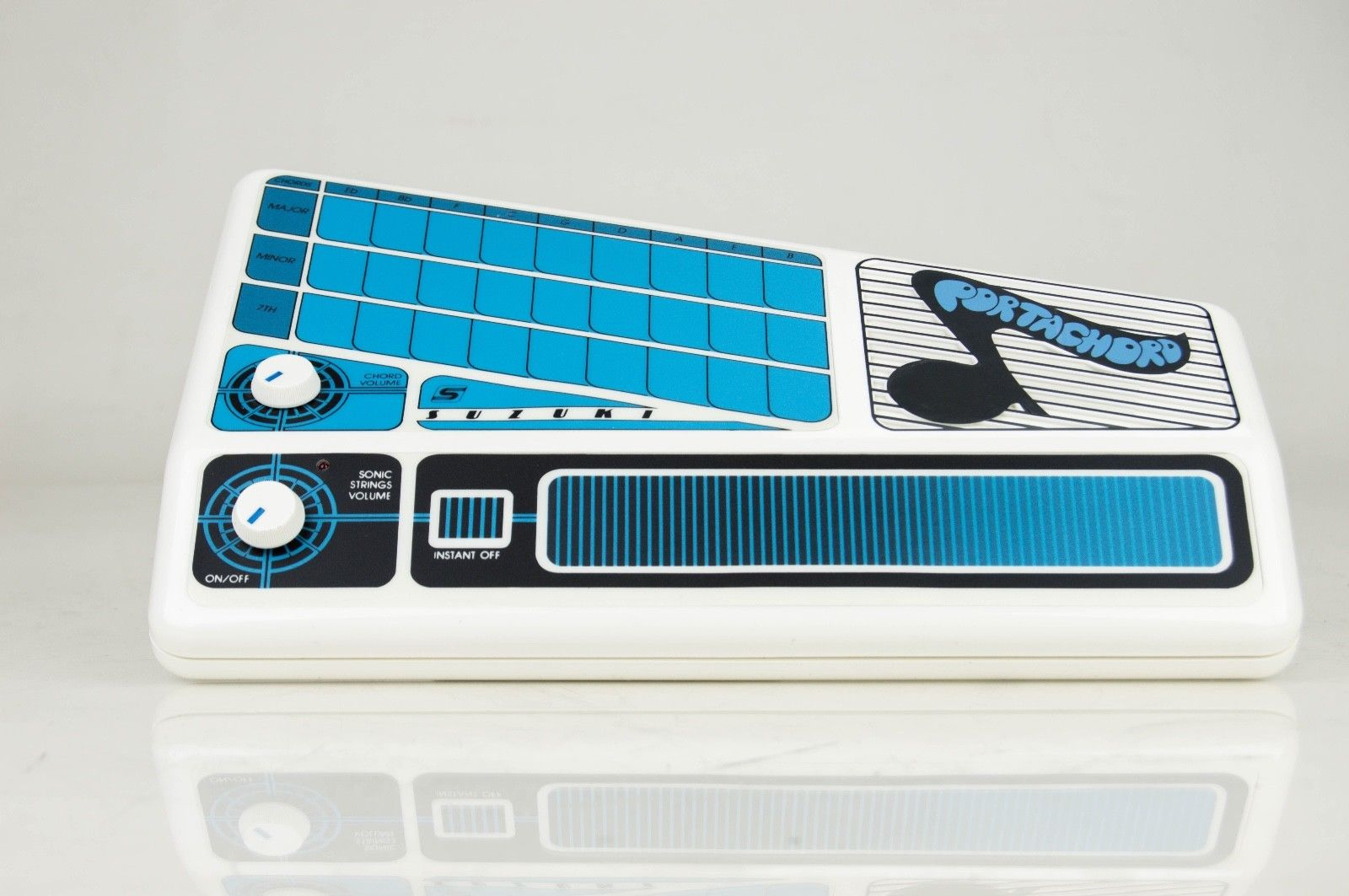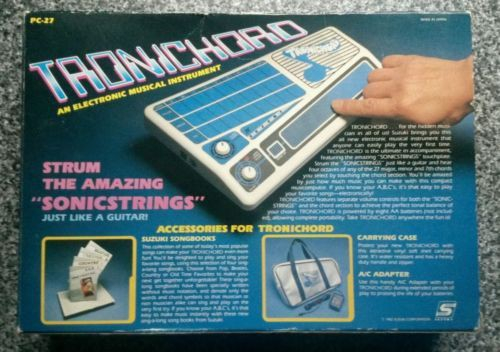Description | The Tronichord/ Portachord was the first in a long line of instruments produced by Suzuki Corporation and available through Suzuki San Diego. It is a very compact, cool and striking design indeed - and was the 'baby' in the range of two instruments (OM-27 was the big brother and released soon after). The cool blue touch sensitive membrane chord pads are positioned above the horizontal strumplate meaning you need to cross hands when playing both together. Only two controls were included; Chord Volume and SonicStrings Volume.
The Tronichord (model PC-27) was the precursor to the later Omnichord and Qchord instruments from Suzuki Music. Some examples of the PC-27 were labelled Portachord rather than Tronichord - as far as I know they are the same instrument apart from the branding.
The Tronichord has two control surfaces, each with its own independent volume control.
The layout of 27 chords is familiar to OM27 owners with Major on the upper row, Minor on the middle row and 7th on the bottom row. An "instant off" touch pad is located to the left of the main strumplate. On the underside you will find a trimpot for adjusting tuning. There is a built in speaker and it can operate from batteries or mains (via a DC adapter). In other words this is a fully functional, self contained little instrument that is completely portable.
The left surface is a chord bank arranged in intervals of a fifth in the sequence Eb, Bb, F, C, G, D, A, E, B. Each chord 'column' has three keys, for major, minor or seventh chords. These can even be combined to play major or minor sevenths. If you need a key signature that isn't labelled, you can simply play the appropriate relative key - so for example if you need to play in Db major, you should select the relative minor which is Bb minor.
Once started, each chord sustains indefinitely until the next chord is selected or until stopped with the 'Instant Off' key.
The right surface is a touch-sensitive strip (called 'Sonic Strings') which plays notes in the arpeggio of the active chord. A light tap in one place will produce a single tone, while tapping it in more than once place simultaneously will sound multiple notes. You can also 'strum' along the length to play a glissando arpeggio. The Sonic Strings notes do not have infinite sustain - instead they produce a kind of chimey sound with a fairly quick decay. If no chord is playing, the Sonic Strings don't play notes - they just make a sort of grumbling noise. It is possible to turn the chord volume all the way down, however, if you only want the Sonic Strings sound on its own.
It's not possible to play 'wrong' notes on the Tronichord because it will only play notes in the currently-selected chord. (NB - this also means you can't play chromatic melodies on it - but this isn't really a limitation as much as a fundamental design principle!)
There is an internal speaker and a 1/4" mono jack output.
A trimpot on the back allows for adjusting the instrument's intonation if playing with other instruments.
It takes eight AA batteries or a 12V centre-negative DC adapter (barrel-type connector).
The Tronichord was produced for a number of years in the early 1980s (and possibly late 70s, although information is a little scarce). The year 1982 is printed on the box. |






